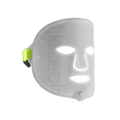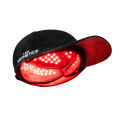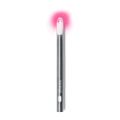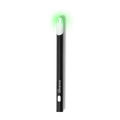

Red light therapy improves skin by stimulating collagen and elastin production, reducing inflammation, and promoting tissue regeneration. Let's take a closer look at each benefit.
REDUCE FINE LINES & WRINKLES
Red light therapy stimulates the production of collagen and elastin, essential proteins for keeping the skin firm and elastic. The result is smoothing out fine lines and wrinkles, giving the skin a more youthful appearance.
IMPROVE SKIN TONE & TEXTURE
Red light therapy also improves skin tone and texture by reducing redness, pigmentation, and inflammation. The light penetrates the skin, increasing blood circulation and oxygenation, leading to smoother and more even skin texture.
TREAT STUBBORN ACNE
Acne is caused by an overproduction of sebum, which clogs the pores and leads to pimples. Red light therapy helps to reduce the production of sebum and kills the bacteria that cause acne. It is a safe and effective treatment option for people who have not responded to other acne treatments.
ACCELERATE SCAR HEALING
Red light therapy is also effective in speeding up the healing of wounds and scars. The light penetrates the skin, increasing blood flow and oxygenation, which promotes the growth of new cells. It also reduces inflammation, which can help to reduce the size of scars.
BOOST COLLAGEN PRODUCTION
Collagen is a protein that is essential for maintaining the elasticity and firmness of the skin. Red light therapy stimulates the production of collagen, which helps to improve skin elasticity, reduce fine lines and wrinkles, and improve skin texture.
Results You Can See

Kyla after 6 weeks treatment for discoloration and sun spots. Individual results vary

Ruby, after 4 weeks treatment for fine lines and texture. Individual results vary

Ember, after 4 weeks treatment for pigmentation and skin tone. Individual results vary
Different wavelengths of light (nm) penetrate the skin at various levels to enhance the skin's natural healing abilities. Red wavelengths penetrate the deepest and have the strongest effect on signs of aging.


LED light therapy works by exposing the skin to low-level light wavelengths, typically in the red or near-infrared spectrum. These wavelengths penetrate the skin's surface and stimulate cells called mitochondria, which are responsible for producing energy for the cell.
This increased energy production leads to various benefits, such as promoting collagen production, reducing inflammation, and increasing blood flow. Different wavelengths can have different effects on the skin, with red light being particularly effective at promoting skin rejuvenation and near-infrared light being more effective at penetrating deeper into the skin for pain relief and tissue repair.
LED light therapy is a safe, non-invasive treatment option with no known side effects and can be used on all skin types and tones.
As the light wavelength increases, so does the depth of penetration. This light is absorbed by receptors in the skin, just like topical skincare, and each colour of light stimulates a different response in the skin. LED is suitable for use on all skin types and tones.
















